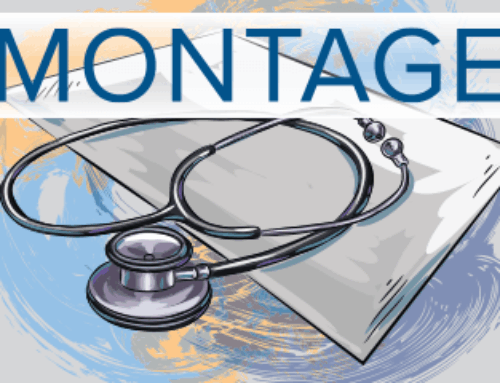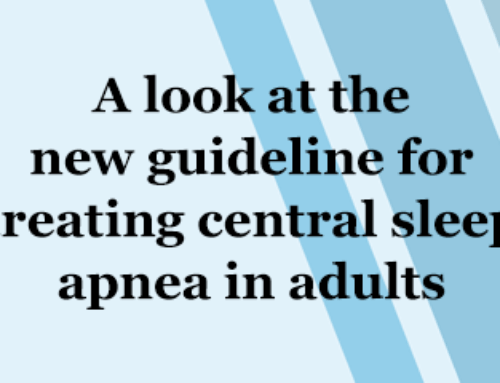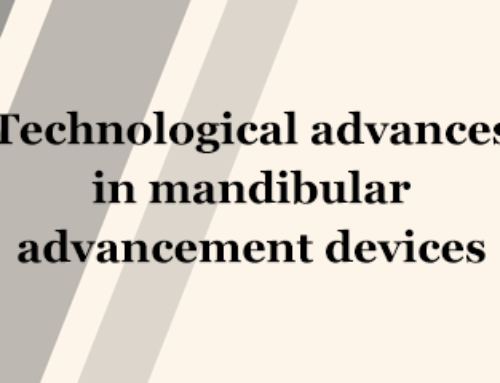If the pandemic taught us anything, it is that technology allows us to do what we never thought possible, including pivoting many aspects of clinical care to the home setting. Clinical practice has been reimagined through the lens of technological advancement, but the groundwork for this evolution was already laid prior to the pandemic. Similarly, sleep technology has been rapidly advancing for over a decade in the consumer and clinical realm with a renewed focus on accessibility and convenience. The drive for greater understanding and control of health metrics by the consumer has resulted in an unprecedented ability to track many aspects of sleep and health overall. As more products are marketed to consumers, more individuals are “self-evaluating” aspects of sleep.
The rapid evolution of sleep technology is associated with significant challenges. The lines between clinical and consumer devices are blurring. Products that are marketed to the consumer may use terminology and report metrics previously reserved for clinical devices. Alternatively, devices may report measures of uncertain clinical significance with unknown normative values. Accuracy of data output may be unclear, and systematic evaluation or validation may be lacking, particularly as it relates to clinical populations. When a device has been evaluated and compared to polysomnography or otherwise, changes in hardware or software over time may result in changes in performance.
The clinical uses of devices are generally determined by FDA-cleared or approved indications. However, the nuance of clearance and approval may be unclear to the public, FDA terms are often misused, and marketing materials are often unclear. FDA evaluation may only extend to a particular function of a device and not cover all the manufacturer’s claimed uses. The population studied to support a given claimed use for a device may be small, and detail regarding the population characteristics may not be reported. Both sensor and algorithmic bias may exist related to the populations studied or utilized for algorithmic training, resulting in inconsistent performance in certain demographic populations or in individuals with certain clinical characteristics. Devices that utilize photoplethysmography (PPG) may perform differentially in individuals with darker skin tones or who are overweight.
In the current, rapidly evolving technological climate, the sleep medicine community is grappling with unanswered questions. In the face of self-evaluation, how do we ensure that individuals seek care for sleep problems when needed? How do we promote the systematic evaluation of sleep technology to optimally benefit patients and providers? How do we advocate for applicability of sleep technology to diverse demographic and clinical populations? How do we influence an industry that is responding to market forces beyond the clinical setting, to shape the direction of technological innovation?
There are several ways that sleep clinicians can have a voice. The sleep clinical community can and does encourage a culture of transparency. One way to accomplish this is by creating content to synthesize what we know and what we don’t know about sleep technology from the clinical perspective. The goal is for the sleep clinical community to be as informed as possible about the strengths and limitations of sleep technology, including the potential presence of bias. Encouraging a culture of transparency can take many forms such as development of review articles or educational materials. The AASM Emerging Technology Committee has sought to contribute to this objective by integrating information about devices/software in the #SleepTechnology searchable database. Second, not only can the sleep community continue to put forth unbiased research utilizing sleep technology in diverse demographic and clinical populations, but we can also clarify standards for systematic evaluation/validation of sleep technology. Several articles published in Sleep and the Journal of Clinical Sleep Medicine over the past two years have put forth such standards, although primarily focused on sleep tracking and characterization. Third, sleep medicine providers can offer specific feedback to industry when appropriate. An example is the AASM’s FAST (Furthering the Advancement of Sleep Technology) program, whereby companies engaged in the creation of sleep technology can request input and guidance from the AASM, with the goal of benefiting sleep medicine patients and providers. Finally, the sleep medicine community can continue to advocate for sleep patients. One important area of advocacy is to continue to put evidence-based information about sleep and sleep disorders into the public realm, including information about sleep technology. This includes resources for patients regarding how to get help for their sleep concerns.
We no longer think solely about disruptors; we now exist in a state of constant disruption. It doesn’t have to mean we are simply along for the ride. Let’s continue to own our sphere of influence.
Maryann Deak, MD, FAASM, was the 2022 – 2023 chair of the AASM Emerging Technology Committee. This article appeared in volume eight, issue one of Montage magazine.





